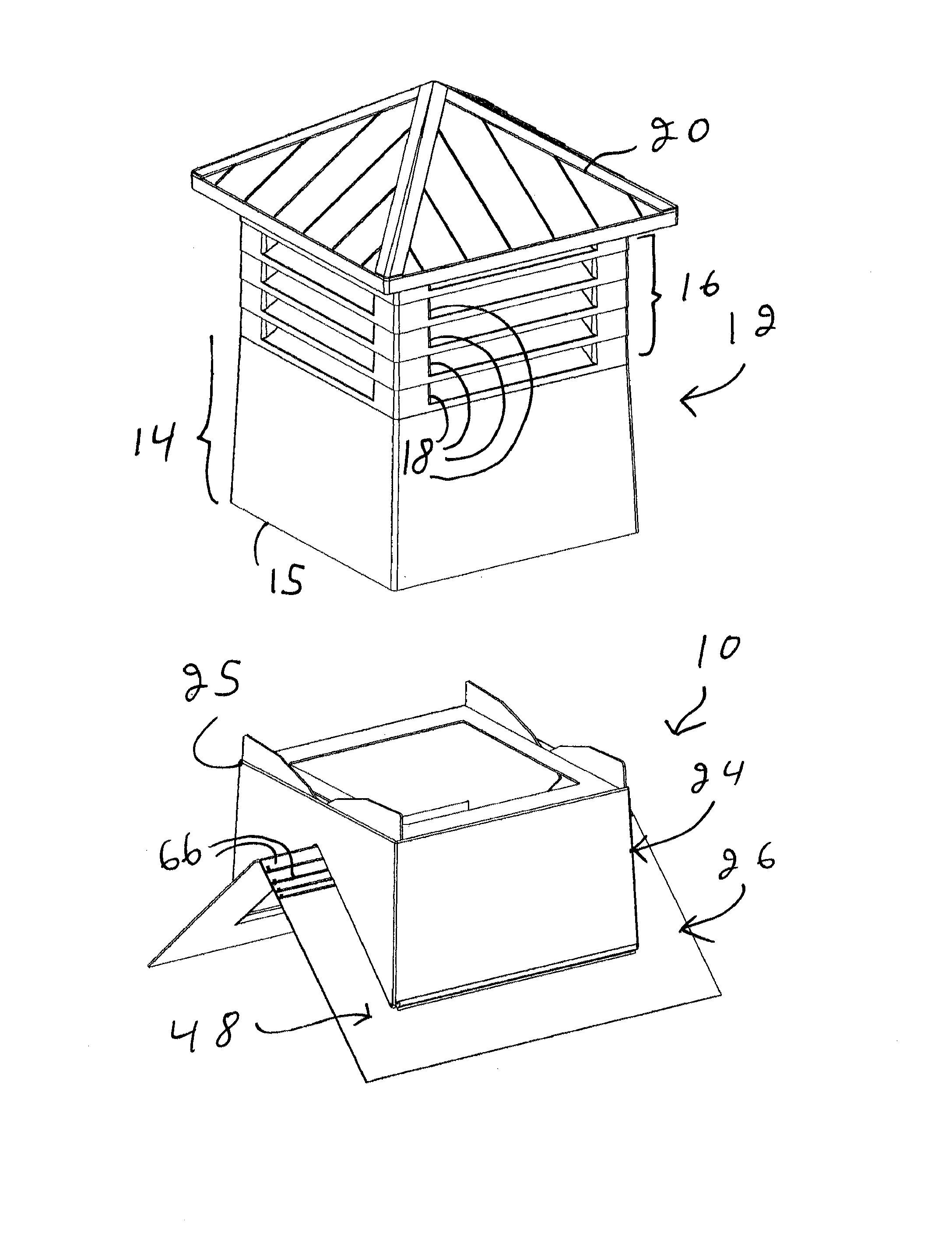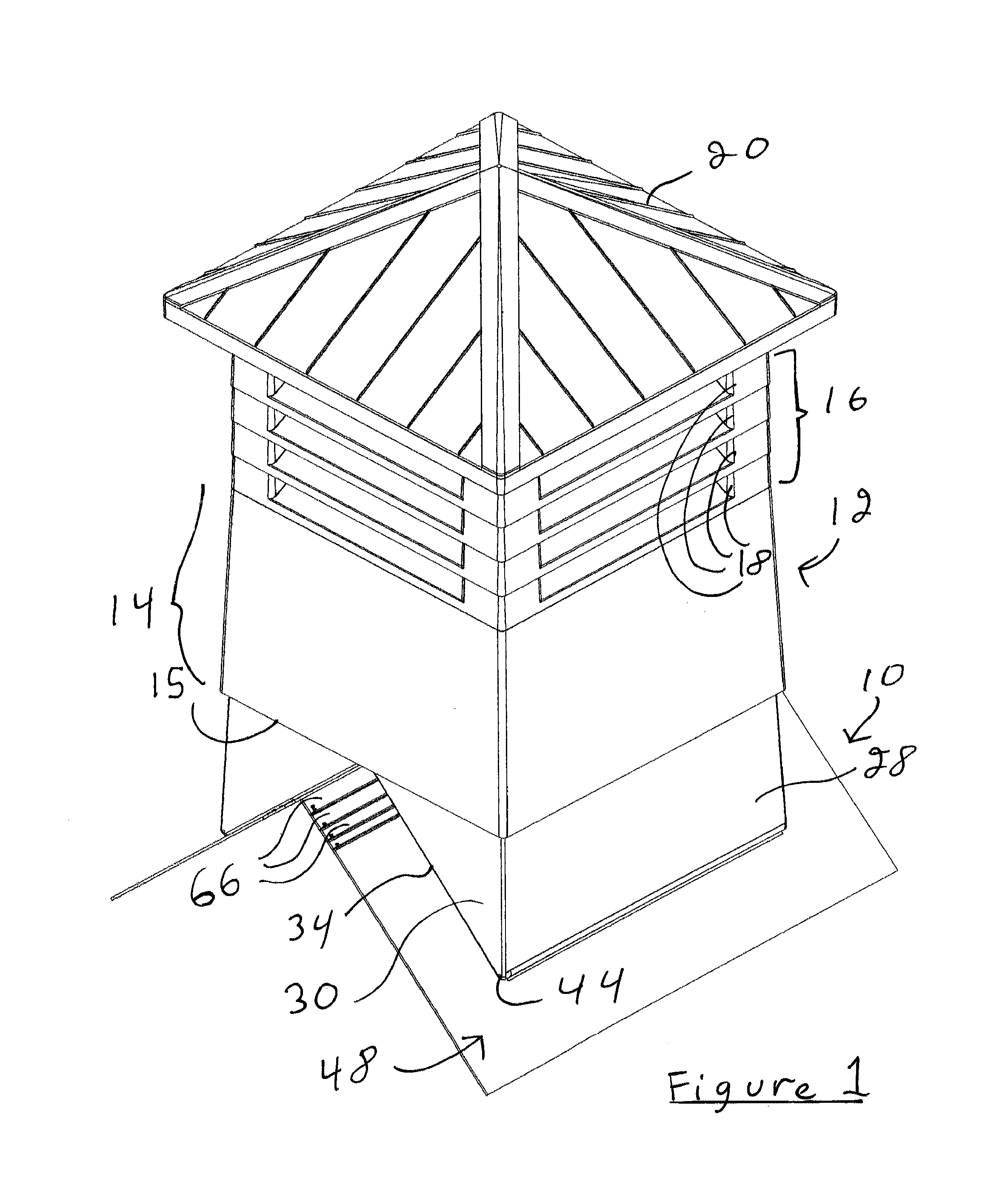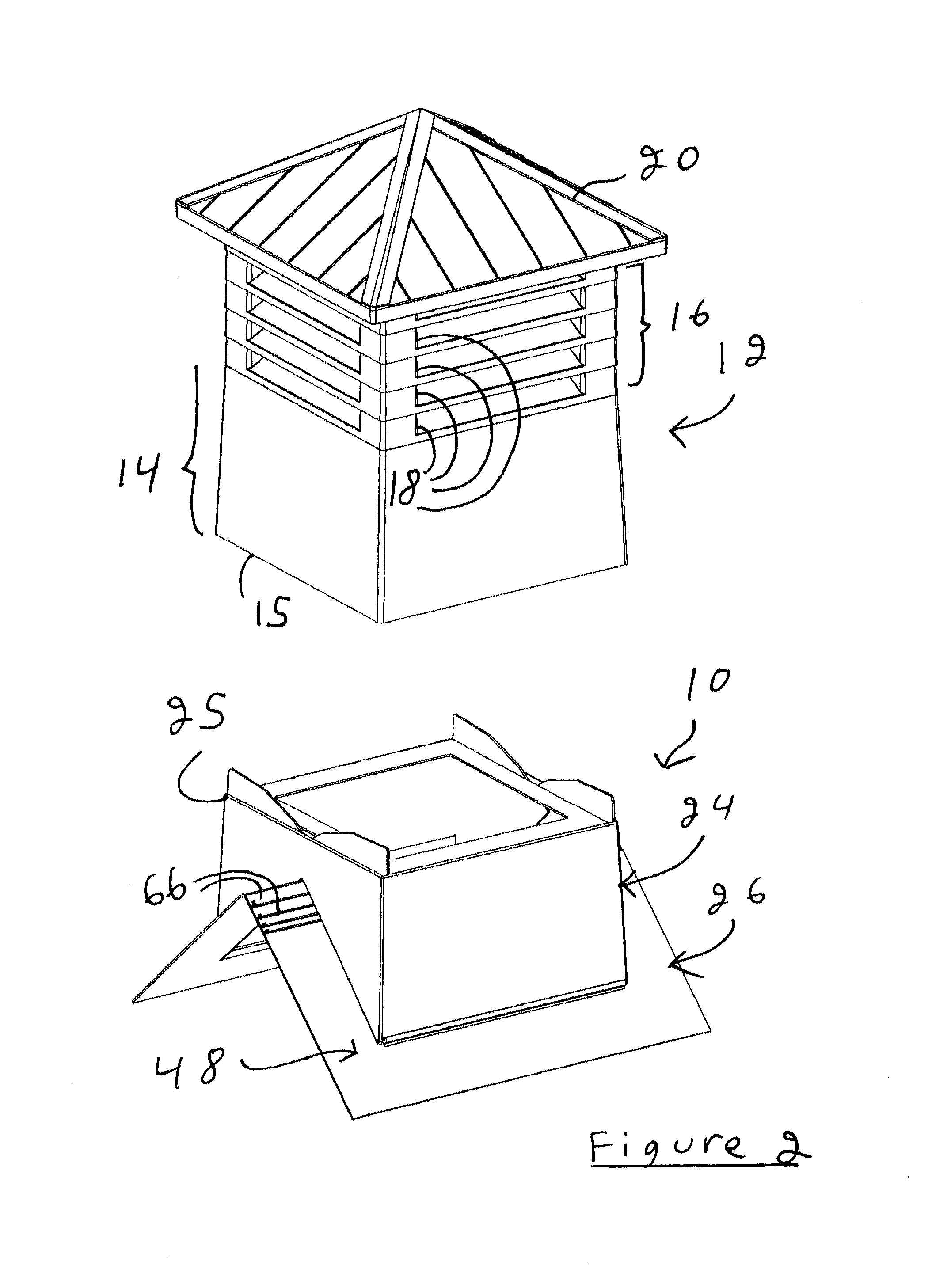Adjustable roof ventilator base
a ventilator base and adjustable technology, applied in the field of roof ventilators, can solve the problems of reducing affecting the overall installation time, and affecting the efficiency of the insulation, so as to reduce the overall installation time, and reduce the effect of compromising
- Summary
- Abstract
- Description
- Claims
- Application Information
AI Technical Summary
Benefits of technology
Problems solved by technology
Method used
Image
Examples
Embodiment Construction
[0041]Referring to FIG. 1, there is shown an adjustable roof ventilator base in accordance with an embodiment of the present invention, generally indicated by the reference numeral 10. The roof ventilator base 10 is shown supporting a cupola 12. The cupola 12 is shown as having a cupola mounting section 14 defining a cupola lower peripheral edge 15 adapted to be abuttingly nested on the roof ventilator base 10. Typically, the cupola 12 also defines a venting section 16 provided with venting slots 18 and a cupola roof or dome 20.
[0042]It should however be understood that the roof ventilator base 10 could be used in other contexts, such as with other types of cupolas 20, other types of roof ventilator components, or the like, without departing from the scope of the present invention.
[0043]Referring now more specifically to FIGS. 9 through 13, there is shown that the roof ventilator base 10 is intended to be used on a gable-type roof 21, typically defining a pair of substantially symme...
PUM
 Login to View More
Login to View More Abstract
Description
Claims
Application Information
 Login to View More
Login to View More - R&D
- Intellectual Property
- Life Sciences
- Materials
- Tech Scout
- Unparalleled Data Quality
- Higher Quality Content
- 60% Fewer Hallucinations
Browse by: Latest US Patents, China's latest patents, Technical Efficacy Thesaurus, Application Domain, Technology Topic, Popular Technical Reports.
© 2025 PatSnap. All rights reserved.Legal|Privacy policy|Modern Slavery Act Transparency Statement|Sitemap|About US| Contact US: help@patsnap.com



